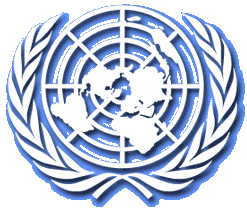News, May 2008
Archives
Mission & Name
Conflict Terminology
Editorials
Gaza Holocaust
Gulf War
Isdood
Islam
News
News Photos
Opinion Editorials
US Foreign Policy (Dr. El-Najjar's Articles)
www.aljazeerah.info
|
Editorial Note: The following news reports are summaries from original sources. They may also include corrections of Arabic names and political terminology. Comments are in parentheses. |
Thousands of Palestinians demand right of return in Ramallah demonstration
Date: 15 / 05 / 2008 Time: 17:27
Ramallah – Ma’an –
Thousands of Palestinians converged in the
center of the West Bank city of Ramallah under the midday sun on
Thursday for a demonstration to mark the sixtieth anniversary of the
Palestinian Nakba and to demand the right of Palestinian refugees to
return to their homes in what is now Israel.
By United Nations figures, more than 700,000 Palestinians were displaced
in the fighting that resulted in the creation of the state of Israel.
Today, millions of refugees and their descendants now live in camps
throughout the Middle East.
The demonstrators first gathered at a mock refugee camp, dubbed “Awda”
(“Return”) camp, set up across the street from the Muqata'a, the
Palestinian presidential compound and the headquarters of the
Palestinian Authority. The demonstration then moved to the central
square, Al-Manara.
A half-hour drive away, on the other side of Israel’s concrete
separation wall and the forbidding Qalandia checkpoint, US President
George W. Bush was in Jerusalem for festivities marking the 60th
anniversary of Israel’s declaration of independence.
A press release sent to media before the demonstration predicted “the
largest demonstration in the West Bank since the outbreak of the Second
Intifada.”
Jamal Juma’, coordinator of the Palestinian Anti-Apartheid Wall Campaign
and organizer with the National Committee to Commemorate the Nakba said,
“The enthusiastic mobilization in the last week among Palestinians all
over their homeland and in the Diaspora has shown that 60 years of
ongoing Nakba, massacres, assaults and repression have not been able to
subdue the Palestinian call for their rights. Ben Gurion’s expectation
that ‘the old will die off and the young will forget’ has been proven
wrong.”
Students from nearby Bir Zeit university appeared in force. Palestinians
from all over the West Bank braved long waits at military checkpoints to
attend the demonstration. Palestinian President Mahmoud Abbas’ televised
address was piped to the assembled crowd through a loudspeaker.
Khamis Al-Jamal, a Bank of Palestine employee, traveled three hours from
the city of Hebron to attend the demonstration. “I came to share the
memory and remember the Nakba and 1948. It is a duty for all
Palestinians to share in this memory,” he said. “We have a right to go
back to our land. We have the keys,” he added.
Asked whether he thought President Abbas’ plans to negotiate a two-state
agreement with Israel would result in the refugees’ return, Al-Jamal was
pessimistic: “Abu Mazen [Abbas] has nothing to do. He has tried to make
peace and solve the refugee problem, but he cannot make this decision;
the decision will be made by Israel and America. He doesn’t have the
power; the Palestinians don’t have the power and I think all the Arabs
don’t have the power.”
Mahmoud Jafar, an information technology specialist from Bethlehem, also
expressed doubts about the probability that refugees will return to
their homes: “UN resolutions state that the refugees should return, but
these resolutions were unfulfilled for 60 years. … this will happen when
there is a final agreement. I am peaceful; I want a two-state solution,
with Israel pulling back to the 1967 borders. There is a chance for
peace, but this chance is decreasing day by day.”
Before the main demonstration in Al-Manara had even ended, young
Palestinian boys were gearing up for a confrontation with Israeli
soldiers at Qalandia checkpoint. Blocking the Jerusalem-Ramallah road
with burning tires, metal dumpsters, and large rocks, the boys then
threw stones at the soldiers, who responded with rubber-coated metal
bullets and sonic bombs. Israeli military jeeps then forced the youths
off the street and into the alleyways of Qalandia refugee camp.
Fair Use Notice
This site contains copyrighted material the use of which has not always been specifically authorized by the copyright owner. We are making such material available in our efforts to advance understanding of environmental, political, human rights, economic, democracy, scientific, and social justice issues, etc. We believe this constitutes a 'fair use' of any such copyrighted material as provided for in section 107 of the US Copyright Law. In accordance with Title 17 U.S.C. Section 107, the material on this site is distributed without profit to those who have expressed a prior interest in receiving the included information for research and educational purposes. For more information go to: http://www.law.cornell.edu/uscode/17/107.shtml. If you wish to use copyrighted material from this site for purposes of your own that go beyond 'fair use', you must obtain permission from the copyright owner.
|
|
|
|
||
|
||||||


